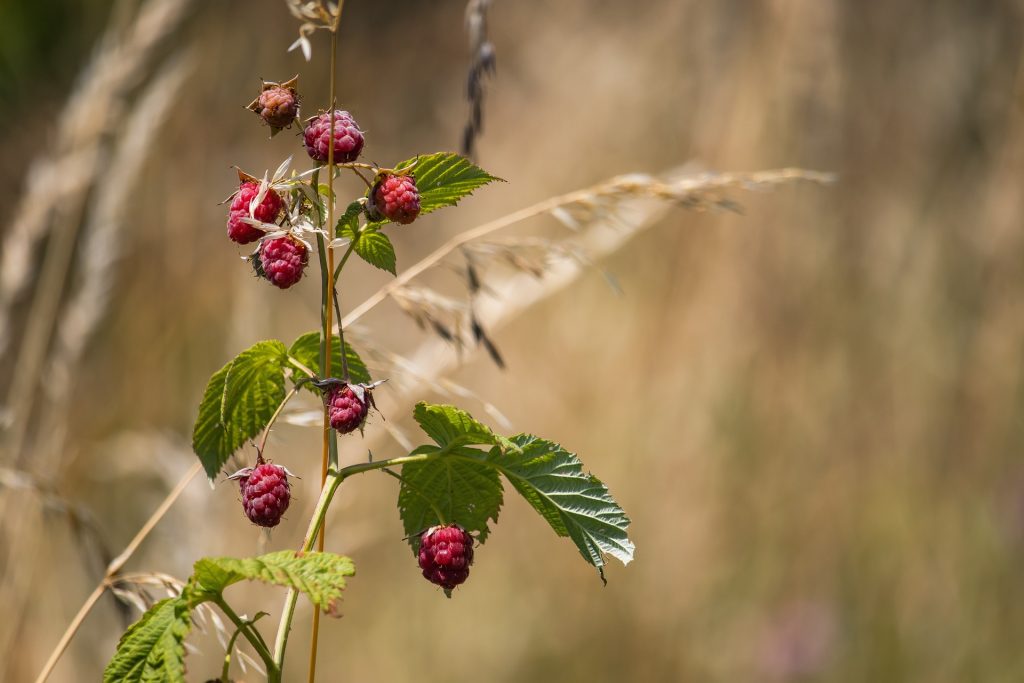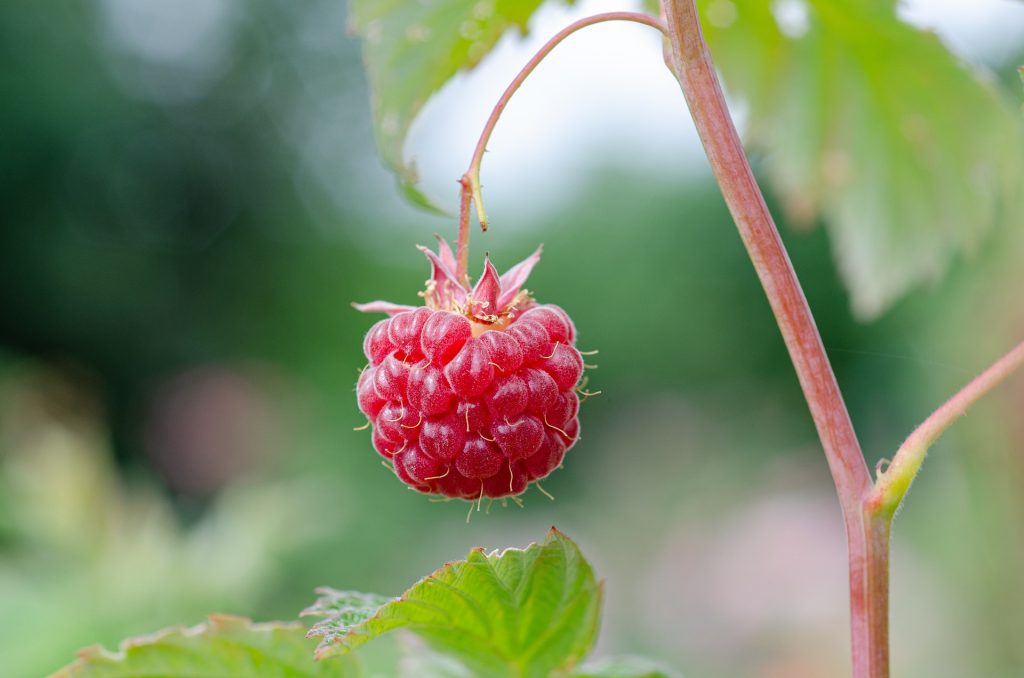Growing Raspberries
Fresh raspberries are one of the delights of summer. They are easy to grow and a well maintained stand will remain productive for many years.

The plant
The raspberry (Rubus idaeus) is a deciduous, perennial shrub. Long canes are produced each season from a permanent crown. The canes are thorn-free but covered with prickly hairs. There are two varieties of raspberry: those that fruit in summer and those that fruit in autumn. It is important to know which sort you have as they are managed quite differently.
The summer fruiting varieties flower and fruit on the previous seasons growth. Each year after harvest all the fruited canes are completely removed to encourage the current season’s growth. Commonly available varieties include: Willamette, Skeena, Chilliwack and Nookta.
Autumn fruiting varieties are smaller, less woody plants and bear their fruit at the tips of the current season’s growth. All the canes are pruned off each Winter. Commonly available varieties are Heritage and Everbearer.

Site and soil
Raspberries prefer an open, sunny site. They do not enjoy extreme heat and need protection from hot afternoon sun and the hot north-westerly winds common in summer.
The soil should be slightly acidic, friable, free draining and high in organic matter.
Planting
Bare rooted canes are available in winter. Plant the canes 30 – 80 cm apart in rows running north – south to allow the sun to reach both sides of the plants. Each cane will produce a clump of six or more canes. The growing canes will need some support. The simplest method is to run three or four wires along the row to a height of 1.2 – 1.5 metres. The canes are tied to these wires in bunches as they grow.
Cultural requirements
Mulch: Raspberries are shallow rooted and will benefit from a deep mulch which conserves soil moisture and reduces soil temperature fluctuations. A mulch of compost and lucerne is ideal as it will also feed the plants.
Water: Adequate soil moisture needs to be available from flowering to harvest. Drip irrigation under mulch is the most efficient method to use. Overhead watering should be avoided as it can increase the risk of fungal diseases. Wind protection may be necessary if the site is exposed.

Harvesting
Raspberries ripen progressively over about four weeks so need to be harvested regularly. Once the fruit is ripe it will come away without its stalk. The berries will not keep well after picking so should to be eaten within a day or two. A single mature clump can produce up to a kilogram of fruit.
Pruning
Summer fruiting varieties: After harvest cut all the fruited canes to the ground. Thin the new canes to five or six of the strongest in each clump. Tie the new canes to the wires. If some are too tall they can either be cut back or tied horizontally along the top wire.
Autumn fruiting varieties: Cut all the canes to the ground after the last fruit is harvested.
Pests and diseases
The major pest problem is birds and plants may need to be netted from the start of ripening until harvest.
Fungal diseases such as anthracnose, leaf spot and botrytis can attack raspberries. Cultural controls such as ensuring good air circulation, avoiding overhead watering and removing any diseased canes will usually be sufficient.